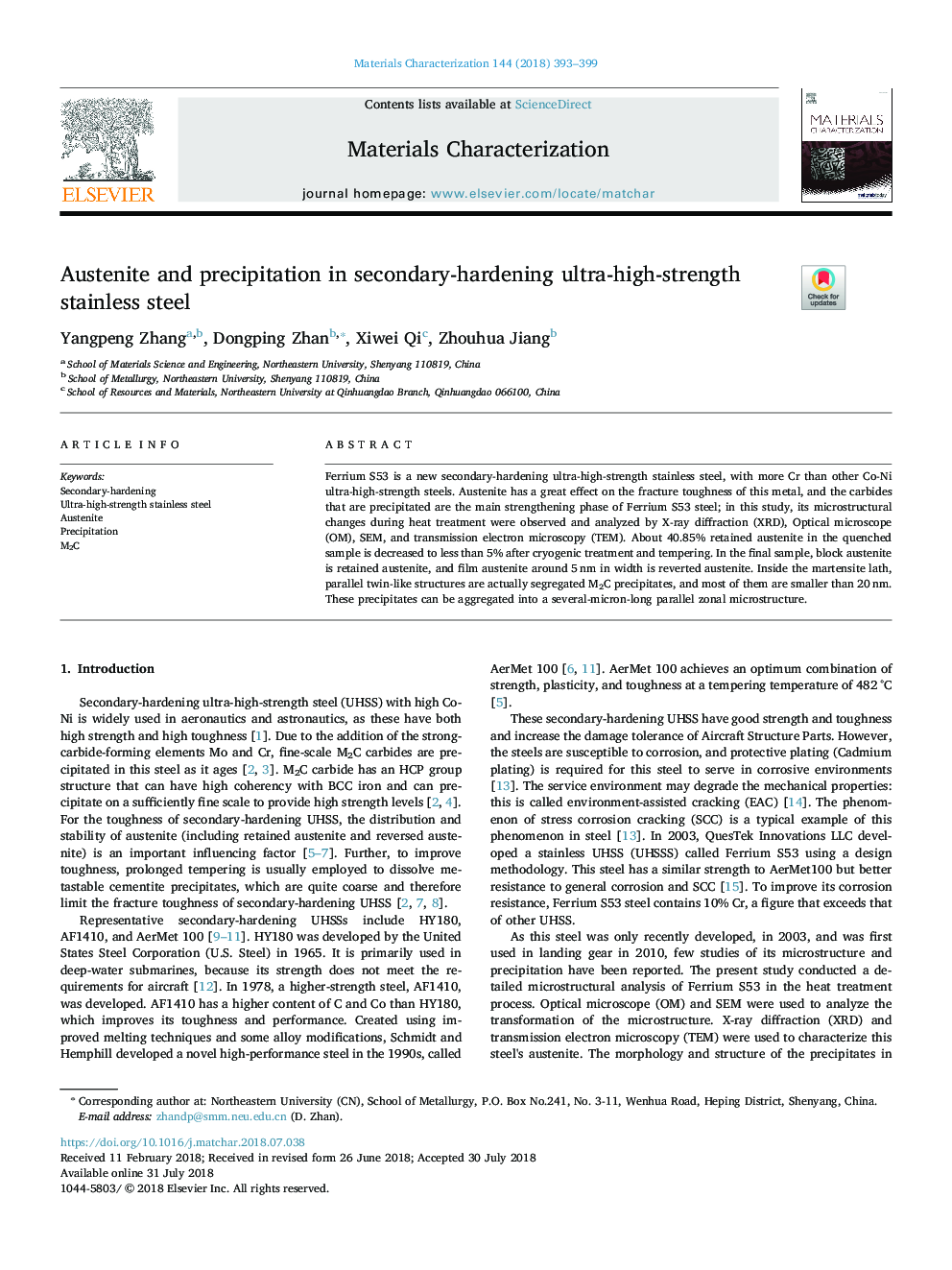| Article ID | Journal | Published Year | Pages | File Type |
|---|---|---|---|---|
| 7969044 | Materials Characterization | 2018 | 7 Pages |
Abstract
Ferrium S53 is a new secondary-hardening ultra-high-strength stainless steel, with more Cr than other Co-Ni ultra-high-strength steels. Austenite has a great effect on the fracture toughness of this metal, and the carbides that are precipitated are the main strengthening phase of Ferrium S53 steel; in this study, its microstructural changes during heat treatment were observed and analyzed by X-ray diffraction (XRD), Optical microscope (OM), SEM, and transmission electron microscopy (TEM). About 40.85% retained austenite in the quenched sample is decreased to less than 5% after cryogenic treatment and tempering. In the final sample, block austenite is retained austenite, and film austenite around 5â¯nm in width is reverted austenite. Inside the martensite lath, parallel twin-like structures are actually segregated M2C precipitates, and most of them are smaller than 20â¯nm. These precipitates can be aggregated into a several-micron-long parallel zonal microstructure.
Keywords
Related Topics
Physical Sciences and Engineering
Materials Science
Materials Science (General)
Authors
Yangpeng Zhang, Dongping Zhan, Xiwei Qi, Zhouhua Jiang,
